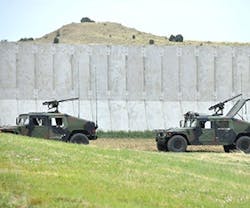Army Base Achieves Net-Zero Energy
The 72-year-old Fort Carson, near Colorado Springs, CO, is not only a historic site but also the flagship project for the Army's Net Zero Energy Initiative. The initiative seeks to reach net-zero energy status for both water and waste by 2020. A new report from the GSA, with help from the National Renewable Energy Laboratory and the Pacific Northwest National Laboratory, outlines the best practices and the most lifecycle cost-effective strategies at the building and portfolio levels.
In addition to the goal of constructing 70 LEED-certified green buildings on base, the report highlights three key best practices:
1. Envelope optimization – By examining all five types of buildings at Fort Carson and comparing solutions against the existing building energy code, (ASHRAE Standard 90.1-2007) the study found that optimization of the envelope in new buildings could save up to 25% above baseline with payback in as little as seven years. Thermal zoning and ventilation setback for times when buildings are not occupied could also save up to 23% on energy, though the report notes that envelope improvements are not useful for every building, especially those dominated by high equipment loads.
2. Daylighting and lighting system improvements – By observing occupancy, lighting, and daylighting patterns at four building types, NREL was able to recommend solutions such as LED retrofits and occupancy sensors that helped buildings on base use 50% less lighting energy than required, with future improvements capable of reducing consumption by up to 90% lower than code.
3. Occupant engagement – By using the Army's Building Energy Monitor program, the authors studied occupant engagement and its relative impact on energy efficiency. The study found that successful engagement was able to reduce energy consumption by approximately 2% at one building, though success rates varied across individual facilities. The report highlights nightly computer shutdown as a key focus for occupant engagement.
The GSA hopes the study will help other agencies and facility managers take a closer look at how efficiently building systems are operating and use lifecycle cost and benefit analysis to find the best way to get their facilities closer to net-zero by 2020.
"Attaining a high standard like net-zero energy requires finding and using every tool in the toolbox," note the study's authors.
Wondering if you could get your building to net zero? Take a look at Near the Mark: Zero in on Energy Neutrality to find easy opportunities to cut costs.
